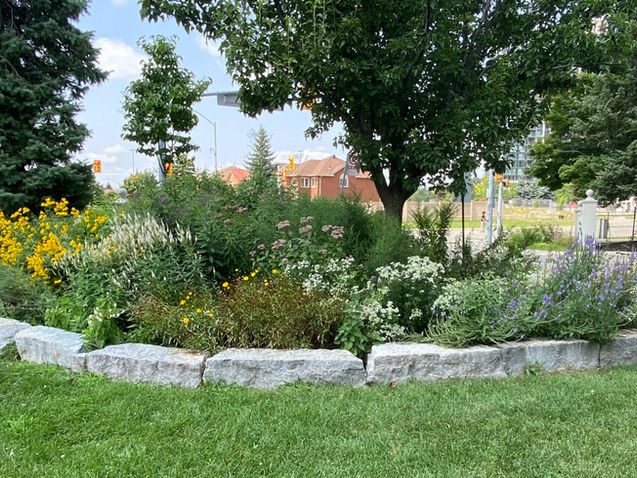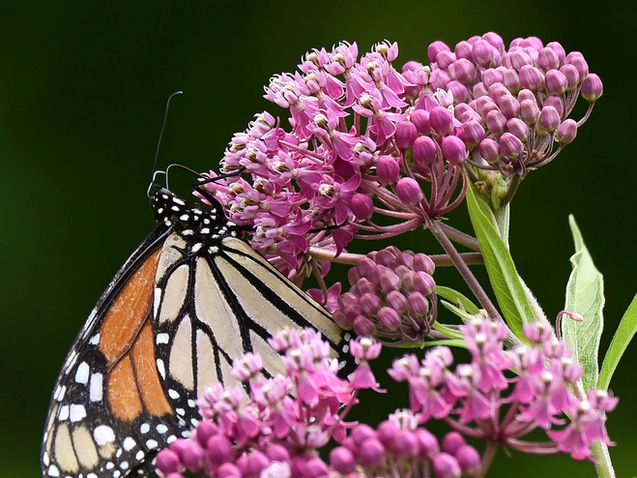top of page
Native habitat garden design guidelines

In a large garden, mass species, and repeat the masses to create a pattern. Consider contrasts in shape, texture, colour, and size. Here, white, blue, and yellow masses are repeated.
Rounded, soft mounds are contrasted with upright, spiky forms. They look beautiful throughout the year, whether blooming or not.


Include species with a variety of flower shapes and sizes, to accommodate the needs of many types of pollinators.
Include host plants to support the larvae of specialized insects. An example is this swamp milkweed, which attracts many pollinators but also, it is one of the endangered monarch caterpillar's favourite host species.


Include keystone species such as this bluestem goldenrod, perfect with native sedges and heuchera in a woodland garden.
Add structure and anchor your pererrenials by adding native trees and shrubs, such as this spring-blooming pagoda dogwood underplanted with wild columbines and wild strawberries.


A path can lead to an appealing destination, in this case, a back deck at the far end of the yard. Design the path as one either soft-edged and curving informally, or one that's straight with clean edges for a formal look. Path materials include mown grass, mulch, gravel, flagstone, or concrete pavers - or a combination!
Same path, but here's the view from the back deck, looking toward the house. Design your garden from different vantage points, and consider installing a bench, an arbor, a birdbath, or other feature as a destination.


Raied beds and containers can be included in your garden's design, especially near patios and decks, or under trees.
Avoid all pesticides and herbicides. Instead, include plants that attract beneficial insects such as wasps and mayflies. Here, an adult ladybug and its small black larvae quickly eliminate a milkweed's bright yellow oleander aphids.


Be sure to select your plants with seasonal bloom succession in mind. Here is the same boulevard garden, beautiful and ecologically functional, delighting passersby and helping pollinators throughout the year.



bottom of page





